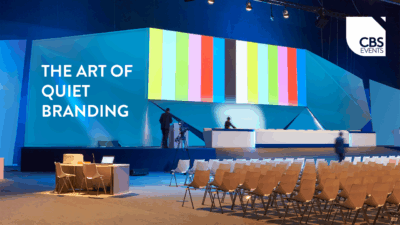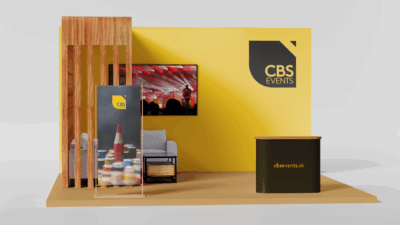Why Heart Matters as Much as Hustle
In the world of corporate events, logistics often take centre stage – timelines, vendor coordination, budget management, production precision. But beyond the checklists and schedules lies something deeper, something more lasting: emotion.
At CBS Events, we’ve come to believe that the most impactful events are ones that are ‘well-felt’.
Whether it’s a product launch, leadership summit, or team offsite, what people remember long after the event is over is how it made them feel. Designing for emotion isn’t an afterthought. It’s where the real magic begins.
The Shift from Information to Experience
Corporate events have conventionally been vehicles for disseminating information. Slide decks and speaker line-ups were enough to carry the day. But today’s audiences (who are increasingly younger, digitally native, and emotionally intelligent) want more. They want stories, authenticity, moments that speak to both the mind and the heart.
This shift demands a new design philosophy: one that blends strategy with empathy, and operations with storytelling.
Emotion by Design: What It Looks Like
So how does one design emotion into a corporate event? It’s not about adding sentimentality for its own sake. It’s about crafting intentional moments that evoke a specific feeling – joy, trust, pride, curiosity – and embedding them naturally into the event flow. Here are a few ways we approach it:
1. Start With the Why
Every event has a goal. We start by asking: what emotion supports this goal? Is it a sense of belonging? A call to ambition? A spark of innovation? Once the desired emotion is clear, everything else, from the theme to the lighting cues, becomes more focused and intentional.
2. Design for All the Senses
Emotion is a sensory experience. The more immersive an event is, the more likely it is to leave a lasting emotional imprint. That means thinking beyond visuals to incorporate soundscapes, tactile design elements, scent (yes, even scent), and thoughtful pacing. A bold colour palette might energise. A soft lighting transition might calm. Even a simple live music cue at the right moment can create goosebumps.
3. Craft the Journey, Not Just the Agenda
Instead of thinking of the event as a linear schedule, we treat it as a journey. Every entry point, transition, pause, and exit is a chance to shape how people feel. We ask: how do we want guests to feel when they walk in? How about after the keynote? What’s the emotional arc by the end of the day?
This approach helps us build events that flow naturally, feel human, and leave participants emotionally full and not just mentally informed.
4. Make Room for Moments of Meaning
Often, it’s not the big-ticket items but the quiet, intentional moments that create emotional resonance – a surprise thank-you video for a retiring leader, a team member’s personal story woven into the agenda, or an unexpected breakout session that sparks vulnerable conversation. One of our events had a team member of the firm perform a song live, one that he had composed and released on Spotify!
These moments require space, sensitivity, and storytelling — all of which we build into the event DNA early on.
5. Don’t Forget Post-Event Emotion
The emotional experience doesn’t end when the stage lights go off. How we follow up matters. Whether it’s a thoughtfully edited recap video, a handwritten note, or a social post capturing behind-the-scenes magic, post-event touchpoints help sustain the emotional connection and deepen engagement.
A Human-Centric Future
At CBS, we’re increasingly inspired by the idea that corporate doesn’t mean impersonal. In fact, the most successful businesses are doubling down on human-centred design.
Designing emotion into corporate events isn’t a soft skill. It’s a strategic advantage. Emotion drives memory. Emotion drives trust. And most of all, emotion drives action.
In a world of endless noise, the events that stay with us are the ones that moved us — not just logistically, but emotionally.
So, What Will They Feel?
As we design our next series of events across India, this is the question we keep returning to: What do we want people to feel when they’re with us?
Because in the end, that’s what they’ll carry home – and back into their work, their teams, and their stories.





